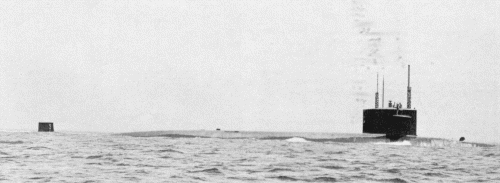
NAVYPEDIA
 Support the project with paypal
Support the project with paypal
Photo

Haddock 1979
Ships
| No | Name | Yard No | Builder | Laid down | Launched | Comm | Fate |
|---|---|---|---|---|---|---|---|
| SSN593 | Thresher | Portsmouth N Yd, Kittery | 28.5.1958 | 9.7.1960 | 3.8.1961 | foundered 10.4.1963 | |
| SSN594 | Permit | Mare Island N Yd, Vallejo | 16.7.1959 | 1.7.1961 | 29.5.1962 | stricken 6.1991 | |
| SSN595 | Plunger | Mare Island N Yd, Vallejo | 2.3.1960 | 9.12.1961 | 21.11.1962 | stricken 2.1990 | |
| SSN596 | Barb (ex-Pollack) | 1079 | Ingalls, Pascagoula | 9.11.1959 | 12.2.1962 | 24.8.1963 | stricken 12.1989 |
| SSN603 | Pollack (ex-Barb) | 534 | New York SB, Camden | 14.3.1960 | 17.3.1962 | 26.5.1964 | stricken 3.1989 |
| SSN604 | Haddo | 535 | New York SB, Camden | 9.9.1960 | 18.8.1962 | 16.12.1964 | stricken 6.1991 |
| SSN605 | Jack | Portsmouth N Yd, Kittery | 16.9.1960 | 24.4.1963 | 31.3.1967 | stricken 7.1990 | |
| SSN606 | Tinosa | Portsmouth N Yd, Kittery | 24.11.1959 | 9.12.1961 | 17.10.1964 | stricken 1.1992 | |
| SSN607 | Dace | 1080 | Ingalls, Pascagoula | 6.6.1960 | 18.8.1962 | 4.4.1964 | stricken 12.1988 |
| SSN612 | Guardfish | 539 | New York SB, Camden | 13.2.1961 | 15.5.1965 | 20.12.1966 | stricken 2.1992 |
| SSN613 | Flasher | 158 | Electric Boat, Groton | 14.4.1961 | 22.6.1963 | 22.7.1966 | stricken 5.1992 |
| SSN614 | Greenling | 160 | Electric Boat, Groton | 15.8.1961 | 4.4.1964 | 3.11.1967 | stricken 4.1994 |
| SSN615 | Gato | 162 | Electric Boat, Groton | 15.12.1961 | 14.5.1964 | 25.1.1968 | stricken 10.1995 |
| SSN621 | Haddock | 1081 | Ingalls, Pascagoula | 24.4.1961 | 21.5.1966 | 22.12.1967 | stricken 4.1993 |
Technical data
| Displacement standard, t | |
|---|---|
| Displacement normal, t | SSN593 - 596, 603, 604, 606, 607, 612, 621: 3705 / 4311 SSN605: 3900 / 4470 SSN613 - 615: 3800 / 4242 |
| Length, m | SSN593 - 596, 603, 604, 606, 607, 612, 621: 84.9 SSN605: 90.5 SSN613 - 615: 89.1 |
| Breadth, m | 9.70 |
| Draught, m | 7.70 |
| No of shafts | 1 SSN605: 1 (2 propellers) |
| Machinery | 2 sets General Electric or de Laval geared steam turbines, 1 Westinghouse S5W nuclear reactor |
| Power, h. p. | 15000 |
| Max speed, kts | 15 / 28 |
| Fuel, t | nuclear |
| Endurance, nm(kts) | practically unlimited |
| Armament | 4 - 533 Mk 63 TT (amidships, 23 torpedoes, including 4 SUBROC UUM-44 ASW rockets) |
| Electronic equipment | SSN593 - 596, 603 - 607, 612, 621: BPS-5 or BPS-9 or BPS-15 radars, BQQ-2 (BQS-6 + BQR-7) sonar suite, BQS-14 sonar, WLR-1 ECM suite SSN613 - 615: BPS-5 or BPS-9 or BPS-15 radars, BQQ-5 sonar suite, BQS-14 sonar, WLR-1 ECM suite |
| Complement | 94 |
| Diving depth operational, m | 400 |
Standard scale images

Permit 1970

Permit 1990

Flasher 1990

Thresher 1963

Permit 1979
Graphics
Project history
This is the largest class of submarines built by the United States since 1945; officially it was subdivided into Thresher/Permit and Sturgeon classes; the original name-ship, Thresher, was lost on diving trials on 10 April 1963. They combine a stronger hull for deeper diving with an advanced long-range BQQ-2 sonar and its associated SUBROC missile; diving depth is reportedly 400m. Later units were lengthened to permit die installation of a BQQ-5 sonar in place of BQQ-2; the extra space is free flooding, and underwater displacement rises by about 200t to 350t (SSN613-615 and most Sturgeon class submarines); ultimately all of these units will have BQQ-5. All will also ultimately receive the Mk 117 fire control system in place of their current Mk 113, providing facilities for Harpoon anti-ship missile control. However, since SUBROC is an analogue rather than a digital weapon, and Mk 117 is a fully digital fire control system, the long-range ASW capability (except as provided by the Mk 48 torpedo) is being lost. SSN613-615 were, in effect, prototype Sturgeons with heavier machinery, taller fins (6.1m rather than 4.2m or 4.6m), improved safety features ('Sub-safe' programme), and lengthened hulls.
As officially described in 1979, Thresher class design compromises included a low sail, inadequate numbers of periscopes and antennas, and limited electronics. The reduced sail height was specifically accepted to minimize the speed loss, given the fixed reactor power of the S5W. The SSN637 class was considerably enlarged for a combination of quieting and additional electronics, as well as improved internal arrangements. Presumably the electronics was a combination of sonar signal processing and torpedo control, one control console being required for each wire-guided torpedo.
These submarines were intended primarily for ASW, with a large spherical sonar array filling their bows, and the torpedo battery, reduced to four tubes, moved aft to abreast the fin, firing diagonally from the hull. One advantage of this arrangement was that a large torpedo room could be provided, permitting a relatively easy choice of weapons for each tube. By the late 1060s, the submarine commander had a choice of long ASW torpedoes, nuclear torpedoes (Astor, or Mk 45, now retired), long anti-ship torpedoes, or SUBROC now there are Harpoon (first tested in Permit in 1976) and, very soon, Tomahawk. Unfortunately total weapon capacity was quite small, figures as low as twenty torpedoes in stowage being reported, so that this variety of weapons is very much a mixed blessing. Indeed, one advantage of the adoption of the Mk 48 torpedo was that it can replace both long ASW and long anti-ship weapons, and the Mk 45 was discarded partly because it consumed valuable space but was unlikely to be used in action.
Since the power plant, the S5W, duplicated that of the earlier Skipjack, and the size of these submarines was much greater (by at least 800t), these ships were considerably slower. There were three attempts within this class id improve propulsion. Jack has contraprops on her single screw, an arrangement never duplicated. Narwhal has a natural convection powerplant (S5G rather than S5W); and Glenard P. Lipscomb had turbo-electric propulsion, both of the last two choices having been made for quietness.
Modernizations
1970s, all: - BQQ-2 sonar suite; + BQQ-3 (BQS-11 + BQR-7) sonar suite
early 1980s, Permit, Plunger, Barb, Pollack, Dace, Flasher, Haddock; late 1980s, Haddo, Jack, Tinosa, Guardfish, Greenling, Gato: - 4 SUBROC ASW rockets (UUM-44); + 4 Harpoon SSM (UGM-84)
late 1980s, many: - BQQ-3 sonar suite; + BQQ-5 sonar suite
Naval service
Thresher sunk 10.4.1963 during diving tests in 220nm E of Boston.
 HOME
HOME FIGHTING SHIPS OF THE WORLD
FIGHTING SHIPS OF THE WORLD UNITED STATES OF AMERICA
UNITED STATES OF AMERICA SUBMARINES
SUBMARINES THRESHER nuclear powered submarines (1961 - 1967)
THRESHER nuclear powered submarines (1961 - 1967)
